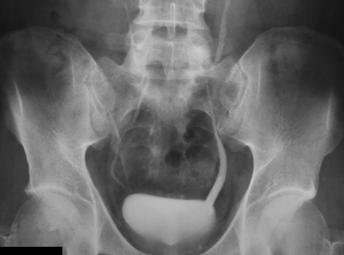An intravenous urogram is one type of imaging test – a test that uses special equipment to create one or more pictures of part of the inside of the body. It may also be called an intravenous pyelogram (IVP).
This topic gives general information. The way the tests are performed will vary between different hospitals.
About the urinary system
The urinary system gets rid of things that the body no longer needs, so that we can grow and stay healthy. The kidneys are bean-shaped organs. They filter blood to remove extra water and waste in urine (wee). Most of us have two kidneys. They are on either side of our spine (backbone), near the bottom edge of our ribs at the back.
The two ureters are long tubes that carry urine from the kidneys to the bladder.
The bladder is a bag that stores urine until we are ready to urinate. It sits low down in the tummy area.
The urethra is a tube that carries urine from the bladder to the outside of the body.
What is an IVU?
An intravenous urogram (IVU) is a special type of X-ray test that uses a contrast dye injected into your child’s bloodstream. (‘Intravenous’ means within a vein, as the dye travels in veins.)
X-rays pass through fluid and soft tissues, but are blocked by more dense – or more solid – structures such as bones. A machine directs a series of X-rays into your child’s body over a period of time. These are recorded as several images.
A contrast dye is injected into a vein, and then passes into your child’s kidneys. This dye blocks X-rays and so can show up the kidneys, ureters and bladder more clearly. If your child has significantly reduced kidney function, injection of contrast dye will be avoided.

Why does my child need this test?
Your doctor will ask for an IVU when he or she needs more detailed information about the structure of your child’s urinary system, and how it is working – especially how urine flows. It may be used to plan treatment, especially surgery.
IVU: risks and complications
What is radiation?
X-rays are one type of ionising radiation, a form of energy. At high levels, ionising radiation can be dangerous to humans because it can damage cells, the living parts of the body.
We are all exposed to ionising radiation – in our homes and workplaces (it is in some construction materials and it seeps from the ground into buildings), when we eat certain foods, and when we take a flight. However, this is at very low levels.
Are intravenous urogram tests harmful?
An intravenous urogram uses a small amount of X-rays and so is considered safe. However, your doctor will carefully consider the risks and benefits of doing this test in your child.
Complications
A very small number of children have an allergic reaction to the contrast dye. Serious problems are very rare, and the hospital will respond to any problems that happen after the test. The allergy symptoms may include:
- itchy rash on the skin
- slight swelling of the lips
- rarely, difficulties breathing
- very rarely, low blood pressure or acute kidney injury (when the kidneys stop working properly over a short time).
How to prepare your child for an IVU
Your child does not usually need to do anything to prepare for this test, but your doctor will let you know.
Your doctor may ask whether your child has allergies to any medicines or contrast dye that may be used during the test.
Older girls may be asked if they are having their period and about the dates of their last period. They may also be asked if they are pregnant or if they could be pregnant. This is because ionising radiation from the IVU may harm an unborn baby.
What happens
The intravenous urogram normally takes place in the X-ray department of your hospital. A doctor or radiographer, a specialist trained in imaging tests, performs the test.
Getting the injection
- Your child will not need to undress, but should try to avoid wearing clothes with metal (such as zippers). Your child may need to remove other metal objects, such as a watch.
- The contrast dye is injected into a blood vessel, using a needle. This is usually in the hand, arm or foot. Your child may feel a sharp scratch from the needle. Your child may also feel a flushing or warm feeling, and a metal taste in his or her mouth – these usually go quickly.
- A local anaesthetic, a spray or cream, can be put on your child’s skin before the test, to help your child stop feeling any pain.
- The test usually takes about 30 minutes, but may take longer depending on how long the contrast dye take to move through the kidneys and into the bladder.
- During the scan, your child lies on a scanning bed.
- Your child lies still while a series of X-ray images are taken – usually about 5-10 minutes apart.
- Your child may be asked to go to the toilet, to empty his or her bladder, before the last image.
What to expect afterwards
Your child can usually go home straight away after the test. Contact your doctor if your child develops:
- an itchy rash on his or her skin
- swelling
- difficulties breathing.
Getting the results
The doctor or radiographer performing the test will send a report to your doctor. Speak with your doctor about when you should expect the results.